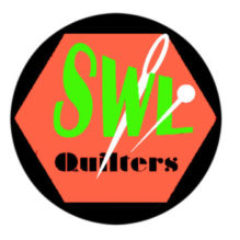These images ranged from close family members and pet dogs to a blonde prisoner in the dock and 70’s pop icon Donnie Osmond.
The first step was to create the pattern. Each photo had been converted to grey scale using Photoshop elements so that it had five tonal values. With a light box (or, in some cases, the round windows of Hall 9!) we traced the outlines of the different tonal shapes on to freezer paper with a mechanical pencil, labeling them 1-5 according to their tonal value and simplifying the edges as necessary. Using a highlighter, we drew around the edge of the picture so that we could easily identify the border. We also highlighted the edges of different major shapes to make the piecing easier. The next step was to mark the edges of the lightest pieces, 1, with red arrows where you would need to add a quarter inch seam allowance when cutting out those pieces. When positioned, this allowance would tuck under the adjacent darker piece. Working from the centre outwards, you would then repeat the red arrow marking for edges of the next tonal value, 2, where it would meet and underlie 3, and do this for 3 to go under 4 and so on.
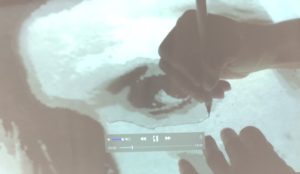
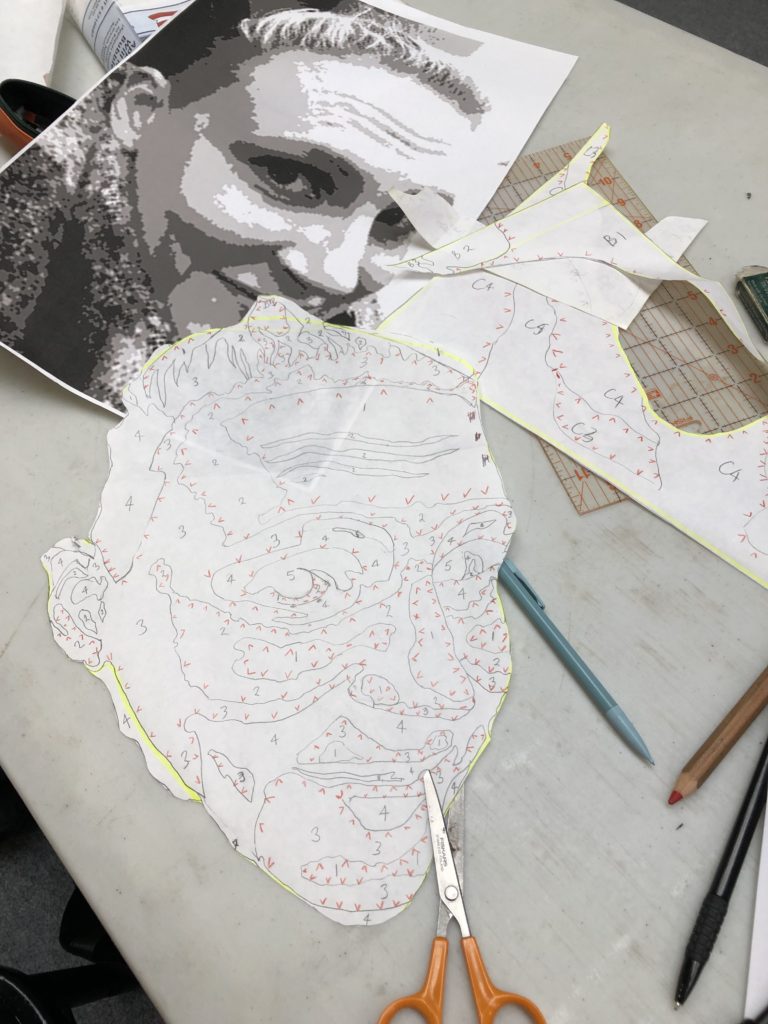
The pieces were then carefully cut out into the larger sections of the face and background.
A tacky fusible material such as Lite Steam-a-Seam2 or Mistyfuse (which is not repositionable, so one has to be super-confident in accurate placing) was then pressed on to the selected fabrics and the lightest shapes cut out adding a quarter inch where indicated.
The portrait was gradually built up on a Teflon sheet, from light to dark, and once satisfied with the layout, it was ironed, before transferring the portrait to a calico base-layer. This was done by carefully peeling off the Teflon sheet from the back of the assembled portrait which was ironed firmly into position on the calico. Additional smaller detail such as eyes, lips and frown lines could then be superimposed on the face.
The next step, the usual quilt sandwich followed by as much machine stitching as you wanted, was left to be done at home. Before stitching, very fine bridal tulle (in beige or white as appropriate) can be added over the top to keep the raw edges neat. As a minimum, each piece should be stitched around on the darker fabric, close to the edge. We were also strongly advised not to quilt contours as they are difficult to get right and can easily distract from the form rather than add to it.
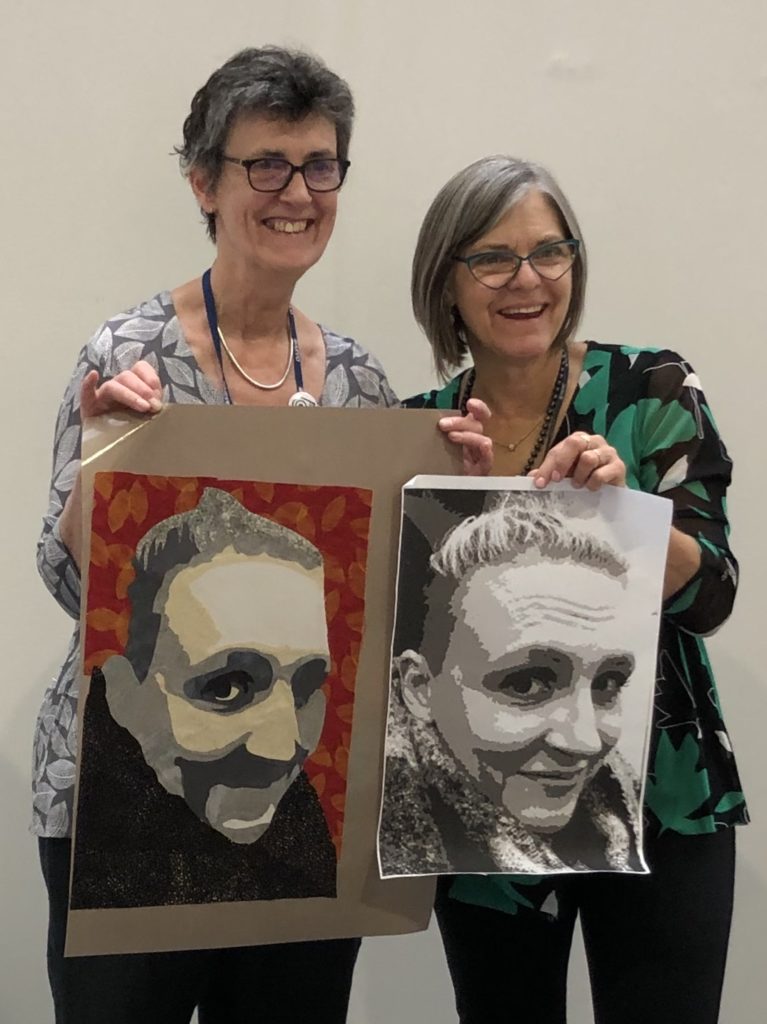
The workshop also included instruction on how to prepare digital files for use in making our own patterns, fabric and colour palette selection and tips for stitching and finishing the portrait quilt.
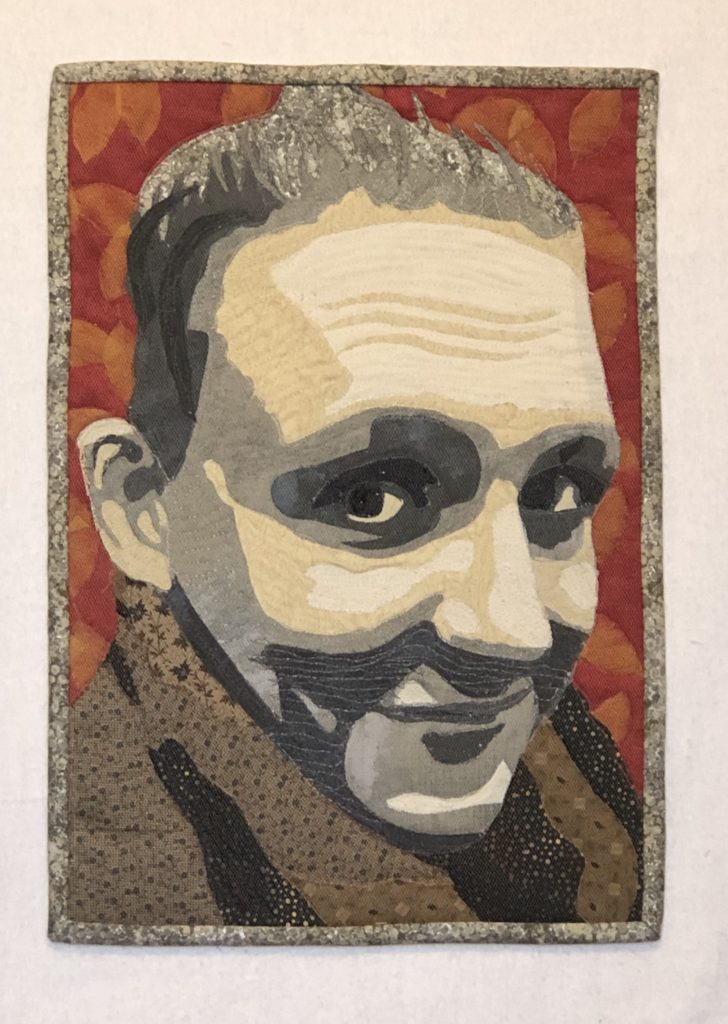
All in all, a great class with lots of helpful tips. (And very challenging! Happily, Lea is a passionate yet patient, calm teacher who never gave up on any of her pupils – Ed)
